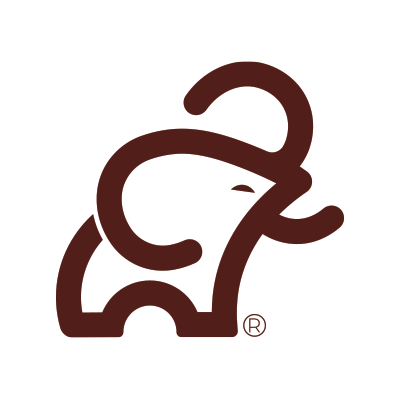Sponsored
- 30 Posts
- 1 Photos
- 0 Videos
- Female
- 13/05/1989
- Followed by 0 people
Recent Updates
- Stud Bolt Manufacturer Introduces The Use Requirements Of Fasteners
2022-7-12
Fasteners can be seen everywhere in daily life, ranging from small screws on watches to large bolt-nut connections on high-speed rail and airplanes. Below, Stud Bolt Manufacturer introduce the misunderstandings when using fasteners:
1. Use coarse teeth instead of fine teeth
There are many important connecting parts on the machine, such as drive shafts, etc. Most of the bolts used are fine thread. If there are missing parts during maintenance, some maintenance personnel will use coarse-toothed bolts instead, which should be avoided. Because the inner diameter of the fine thread bolt is larger, the pitch and outer angle are smaller, the strength is high, the self-locking performance is good, and the ability to withstand shock, vibration, and exchange loads is also relatively strong. Once the coarse-toothed bolts are used instead, it is easy to loosen and break, and in severe cases, it will cause mechanical accidents.
2. The pores do not match
The bolts on the machine that are subjected to lateral load and shear force, such as drive shaft bolts and flywheel bolts, have a transitional fit with the bolt holes, and the assembly should be strong and reliable and can withstand lateral forces. In fact, during the assembly process, the installation is often continued when the gap between the bolt and the hole is large, which can easily lead to bolt loosening or cutting accidents.
3. Thickened nut to increase connection reliability
Some people mistakenly believe that thickening the nut can increase the number of working turns of the thread and improve the reliability of the coupling. But in fact, the thicker the nut, the more uneven the load distribution among the threads, and the easier the coupling is to loosen.
4. One mother and more pads
Sometimes after the installation is completed, the bolts are too long, and workers will additionally install spring washers on the bolts. If it falls, it may also generate an eccentric load and reduce the reliability of the bolted connection.
5. The tighter the screw, the better
Many staff members have such a misunderstanding: they think that the bolts should be "better tight than loose", so they deliberately increase the tightening torque, resulting in the bolts slipping. In addition, for some important bolts that need to be tightened with torque, some people use an adjustable wrench to tighten them because of the lack of trouble, resulting in insufficient torque, resulting in loosening of the bolts, and mechanical failure in severe cases.
6. The washer is too large
Sometimes there is a lack of a suitable size washer, and the staff will replace it with a washer with a larger inner diameter. In this case, the contact area between the head of the bolt and the washer is small, which will reduce the bearing pressure or locking force of the washer. In the presence of vibration or shock, the bolts are easily loosened.
7. Inappropriate locking
Important bolts should be locked with anti-loosening devices after assembly. If a cotter pin is used for locking, a too-thin cotter pin or half-piece cotter pin should not be used; if a spring washer is used for locking, the washer opening should not be too small; Edges and corners; if double nut locking is used, the thinner nut should not be installed on the outside.
8. False solid
If there are impurities such as rust, scale, iron filings, etc. on the threads of bolts, nuts, etc., it must be cleaned before assembly; impurities such as burrs and sediment on the joint surface of the coupling should also be removed. Otherwise, when the bolt is tightened, it appears to be tightened on the surface, but in fact, the coupling is not really compressed. Under such false firmness, the bolts will loosen quickly if vibrations, shock loads, and temperature changes occur.
Through the above introduction, Heavy Hex Bolt Manufacturer hopes that you can simply refer to the content of this article in future use.
https://www.ydfastener.com/
Stud Bolt Manufacturer Introduces The Use Requirements Of Fasteners 2022-7-12 Fasteners can be seen everywhere in daily life, ranging from small screws on watches to large bolt-nut connections on high-speed rail and airplanes. Below, Stud Bolt Manufacturer introduce the misunderstandings when using fasteners: 1. Use coarse teeth instead of fine teeth There are many important connecting parts on the machine, such as drive shafts, etc. Most of the bolts used are fine thread. If there are missing parts during maintenance, some maintenance personnel will use coarse-toothed bolts instead, which should be avoided. Because the inner diameter of the fine thread bolt is larger, the pitch and outer angle are smaller, the strength is high, the self-locking performance is good, and the ability to withstand shock, vibration, and exchange loads is also relatively strong. Once the coarse-toothed bolts are used instead, it is easy to loosen and break, and in severe cases, it will cause mechanical accidents. 2. The pores do not match The bolts on the machine that are subjected to lateral load and shear force, such as drive shaft bolts and flywheel bolts, have a transitional fit with the bolt holes, and the assembly should be strong and reliable and can withstand lateral forces. In fact, during the assembly process, the installation is often continued when the gap between the bolt and the hole is large, which can easily lead to bolt loosening or cutting accidents. 3. Thickened nut to increase connection reliability Some people mistakenly believe that thickening the nut can increase the number of working turns of the thread and improve the reliability of the coupling. But in fact, the thicker the nut, the more uneven the load distribution among the threads, and the easier the coupling is to loosen. 4. One mother and more pads Sometimes after the installation is completed, the bolts are too long, and workers will additionally install spring washers on the bolts. If it falls, it may also generate an eccentric load and reduce the reliability of the bolted connection. 5. The tighter the screw, the better Many staff members have such a misunderstanding: they think that the bolts should be "better tight than loose", so they deliberately increase the tightening torque, resulting in the bolts slipping. In addition, for some important bolts that need to be tightened with torque, some people use an adjustable wrench to tighten them because of the lack of trouble, resulting in insufficient torque, resulting in loosening of the bolts, and mechanical failure in severe cases. 6. The washer is too large Sometimes there is a lack of a suitable size washer, and the staff will replace it with a washer with a larger inner diameter. In this case, the contact area between the head of the bolt and the washer is small, which will reduce the bearing pressure or locking force of the washer. In the presence of vibration or shock, the bolts are easily loosened. 7. Inappropriate locking Important bolts should be locked with anti-loosening devices after assembly. If a cotter pin is used for locking, a too-thin cotter pin or half-piece cotter pin should not be used; if a spring washer is used for locking, the washer opening should not be too small; Edges and corners; if double nut locking is used, the thinner nut should not be installed on the outside. 8. False solid If there are impurities such as rust, scale, iron filings, etc. on the threads of bolts, nuts, etc., it must be cleaned before assembly; impurities such as burrs and sediment on the joint surface of the coupling should also be removed. Otherwise, when the bolt is tightened, it appears to be tightened on the surface, but in fact, the coupling is not really compressed. Under such false firmness, the bolts will loosen quickly if vibrations, shock loads, and temperature changes occur. Through the above introduction, Heavy Hex Bolt Manufacturer hopes that you can simply refer to the content of this article in future use. https://www.ydfastener.com/WWW.YDFASTENER.COMHex Nut Manufacturers & Suppliers | Custom YongDing FastenerZhenhai Yongding Fastener is a hex nut manufacturer, specializing in providing high-quality hex nuts, and can also provide customers with custom fasteners services. YongDing hex nuts are widely used and have large tightening force.0 Comments 0 Shares 475 Views 0 ReviewsPlease log in to like, share and comment! - Hex Bolt Wholesaler Introduces The Use Details Of Nuts
2022-5-17
The lock nut can effectively improve the assembly accuracy, improve the deflection of the spindle, is easy to install, not easy to loosen, and can prolong the service life of the workpiece. Widely used in precision mechanisms. The lock nut is easy to assemble. Tighten to-rated tightening torque using a hook wrench or insert wrench. The required tightening torque depends on the required pre-tightening. When pre-tightening the nut body, pass the Allen key and tighten Tighten until the locking screw is blocked. Then tighten the screws one by one. Below, Hex Bolt Wholesaler describes three ways to use lock nuts:
1. Use two identical nuts to tighten the same bolt and increase the tightening torque between the two nuts to ensure the bolt connection.
2. Lock nuts should be used with lock washers.
3. From the outer surface of the nut to the surface of the inner thread, there are several screw holes (usually two screw holes, distributed in a ratio of 90), which are used to tighten small-diameter countersunk head screws. The centripetal force prevents the locknut from loosening.
Through the above introduction, 2H Heavy Hex Nuts Manufacturers hopes that you can simply refer to the content of this article in future use.
https://www.ydfastener.com/
Hex Bolt Wholesaler Introduces The Use Details Of Nuts 2022-5-17 The lock nut can effectively improve the assembly accuracy, improve the deflection of the spindle, is easy to install, not easy to loosen, and can prolong the service life of the workpiece. Widely used in precision mechanisms. The lock nut is easy to assemble. Tighten to-rated tightening torque using a hook wrench or insert wrench. The required tightening torque depends on the required pre-tightening. When pre-tightening the nut body, pass the Allen key and tighten Tighten until the locking screw is blocked. Then tighten the screws one by one. Below, Hex Bolt Wholesaler describes three ways to use lock nuts: 1. Use two identical nuts to tighten the same bolt and increase the tightening torque between the two nuts to ensure the bolt connection. 2. Lock nuts should be used with lock washers. 3. From the outer surface of the nut to the surface of the inner thread, there are several screw holes (usually two screw holes, distributed in a ratio of 90), which are used to tighten small-diameter countersunk head screws. The centripetal force prevents the locknut from loosening. Through the above introduction, 2H Heavy Hex Nuts Manufacturers hopes that you can simply refer to the content of this article in future use. https://www.ydfastener.com/WWW.YDFASTENER.COMHex Nut Manufacturers & Suppliers | Custom YongDing FastenerZhenhai Yongding Fastener is a hex nut manufacturer, specializing in providing high-quality hex nuts, and can also provide customers with custom fasteners services. YongDing hex nuts are widely used and have large tightening force.0 Comments 0 Shares 313 Views 0 Reviews - Hex Bolt Wholesalers Introduces The Use Of Threads
2022-4-18
Hex Bolt Wholesalers Introduces 6 threading tips for 2h heavy hex nuts :
1. Thread turning
Thread turning on a lathe can be done with a forming turning tool or a thread comb. Turning threads with a forming turning tool is a common method for single-piece and small-batch production of threaded workpieces due to the simple tool structure; turning threads with a thread combing tool have high production efficiency, but the tool structure is complex, only suitable for medium and large batch production. Turning short thread workpieces with fine pitch.
2. Thread milling
Milling with a disc or comb cutter on a thread mill. Disc milling cutters are mainly used for milling trapezoidal external threads on workpieces such as screws and worms. The pitch accuracy of thread milling can generally reach 8 to 9 grades, and the surface roughness is R5 to 0.63 microns. This method is suitable for mass production of threaded workpieces of general precision or for roughing before grinding.
3. Thread grinding
Mainly used for precision threads of hardened workpieces on thread grinding machines. This method is suitable for grinding precision screws, thread gauges, worms, small batches of threaded workpieces, and relief grinding precision hobs.
4. Thread grinding
The nut-type or screw-type thread grinder is made of soft materials such as cast iron, and the parts where the thread has a pitch error on the workpiece are subjected to forward and reverse rotation grinding to improve the pitch accuracy. Hardened internal threads are usually ground to eliminate deformation and improve accuracy.
5. Tapping and threading
Tapping is to screw the tap into the pre-drilled bottom hole on the workpiece with a certain torque to process the internal thread. Tapping and threading can be performed by hand, as well as by lathes, drill presses, tapping machines, and threading machines.
6. Thread rolling
External threads for mass production of standard fasteners and other threaded couplings. The outer diameter of the rolled thread is generally not more than 25 mm, the length is not more than 100 mm, the thread accuracy can reach level 2, and the diameter of the blank used is roughly equal to the pitch diameter of the thread being processed.
Through the above introduction, 2H Heavy Hex Nuts Suppliers hopes that you can simply refer to the content of this article in future use.
https://www.ydfastener.com/
Hex Bolt Wholesalers Introduces The Use Of Threads 2022-4-18 Hex Bolt Wholesalers Introduces 6 threading tips for 2h heavy hex nuts : 1. Thread turning Thread turning on a lathe can be done with a forming turning tool or a thread comb. Turning threads with a forming turning tool is a common method for single-piece and small-batch production of threaded workpieces due to the simple tool structure; turning threads with a thread combing tool have high production efficiency, but the tool structure is complex, only suitable for medium and large batch production. Turning short thread workpieces with fine pitch. 2. Thread milling Milling with a disc or comb cutter on a thread mill. Disc milling cutters are mainly used for milling trapezoidal external threads on workpieces such as screws and worms. The pitch accuracy of thread milling can generally reach 8 to 9 grades, and the surface roughness is R5 to 0.63 microns. This method is suitable for mass production of threaded workpieces of general precision or for roughing before grinding. 3. Thread grinding Mainly used for precision threads of hardened workpieces on thread grinding machines. This method is suitable for grinding precision screws, thread gauges, worms, small batches of threaded workpieces, and relief grinding precision hobs. 4. Thread grinding The nut-type or screw-type thread grinder is made of soft materials such as cast iron, and the parts where the thread has a pitch error on the workpiece are subjected to forward and reverse rotation grinding to improve the pitch accuracy. Hardened internal threads are usually ground to eliminate deformation and improve accuracy. 5. Tapping and threading Tapping is to screw the tap into the pre-drilled bottom hole on the workpiece with a certain torque to process the internal thread. Tapping and threading can be performed by hand, as well as by lathes, drill presses, tapping machines, and threading machines. 6. Thread rolling External threads for mass production of standard fasteners and other threaded couplings. The outer diameter of the rolled thread is generally not more than 25 mm, the length is not more than 100 mm, the thread accuracy can reach level 2, and the diameter of the blank used is roughly equal to the pitch diameter of the thread being processed. Through the above introduction, 2H Heavy Hex Nuts Suppliers hopes that you can simply refer to the content of this article in future use. https://www.ydfastener.com/WWW.YDFASTENER.COMHex Nut Manufacturers & Suppliers | Custom YongDing FastenerZhenhai Yongding Fastener is a hex nut manufacturer, specializing in providing high-quality hex nuts, and can also provide customers with custom fasteners services. YongDing hex nuts are widely used and have large tightening force.0 Comments 0 Shares 387 Views 0 Reviews - China Stud Bolt Manufacturer Introduces The Requirements For The Use Of Hexagon Head BoltsChina Stud Bolt Manufacturer introduces 3 common materials of hexagon head bolts: 1. The material of the inner and outer hexagon head bolts is generally 304 stainless steel, and a layer of anti-oxidation is formed on the surface. This material is added with molybdenum, which has good corrosion resistance, wear-resistance, and rust resistance, and can be strong Up to 4.8, it is often used for...0 Comments 0 Shares 698 Views 0 Reviews
- Hex Nut Manufacturers Describes How To Repair BoltsHex Nut Manufacturers introduces techniques for maintaining high-strength bolts: 1. The high-strength bolt connection pair should be supplied by the manufacturer in accordance with the batch matching, and each of the packaging boxes must be equipped with high-strength bolts and nuts as well as matching washers. The packaging box must be able to satisfy the needs of storage and transportation,...0 Comments 0 Shares 701 Views 0 Reviews
- Hex Nut Manufacturers Introduces The Maintenance Details Of NutsHex Nut Manufacturers introduces that stainless steel nuts are stored in the atmosphere for a long time. When the material performance exceeds the limit, some rust will occur. If the corrosion of stainless steel nuts is severe, the threads inside will also be broken. It will be very difficult to remove it later. If you are not careful, the stainless steel nuts and bolts will lock up, which is...0 Comments 0 Shares 711 Views 0 Reviews
- Hex Nut Manufacturer Introduces The Classification Requirements Of Hexagon NutsA nut is a nut, a part that is screwed together with a bolt or screw for fastening. This kind of product seems simple, but there are many classifications in real life. Not only can they be classified because of different standards in different countries, but also can be classified based on different characteristics such as size, size, function, etc. Below, follow the Hex Nut Manufacturer to see...0 Comments 0 Shares 759 Views 0 Reviews
- Hex Nut Manufacturer Introduces The Use Details Of Stud BoltsStud bolts are generally used in relatively large buildings or machines. If a machine lacks stud bolts, it cannot be operated. Below,Hex Nut Manufacturer introduces the use of stud bolts: 1. Stud bolts can be used in large-scale main equipment, and installation accessories such as sight glasses, mechanical seal seat stud bolts, and reduction frames are required. At this time, stud bolts...0 Comments 0 Shares 714 Views 0 Reviews
- Hex Nut Manufacturer Introduces The Maintenance Requirements Of Stainless Steel ScrewsHex Nut Manufacturer introduces the main reasons for the loosening of stainless steel screws: Spontaneous bolt loosening-shock, vibration, dynamic load, relaxation-settlement, creep, relaxation. In order to prevent spontaneous loosening, it is necessary to eliminate the sliding between the connecting parts, or at least reduce it to below the critical level. This can be achieved by...0 Comments 0 Shares 816 Views 0 Reviews
- 2h Heavy Hex Nuts Manufacturer Introduces The Use Of Bolts2H Heavy Hex Nuts Manufacturer introduces bolt mechanical parts, cylindrical threaded fasteners with nuts. A fastener consisting of a head and a screw (cylinder with external thread). Nuts are required to connect the two parts with the through-hole. This type of connection is called bolt connection. If the nut is rotated from the bolt, the two parts can be separated, so the bolt...0 Comments 0 Shares 807 Views 0 Reviews
More Stories













